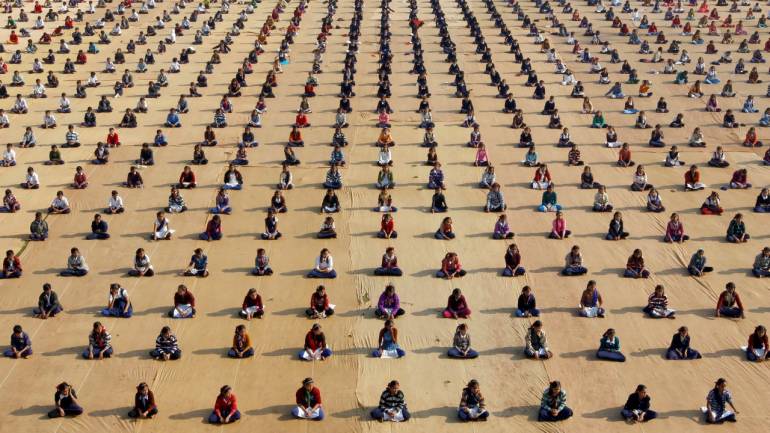
On the eve of International Day for Yoga, WHO today said yoga’s full potential should be harnessed as it reduces the risk of life-threatening non-communicable diseases.
Adequate physical activity improves muscular and cardiorespiratory fitness, enhances bone and functional health, helps prevent depression and promote mental health, WHO Regional Director for South-East Asia Dr Poonam Khetrapal Singh said.
WHO said that practising yoga reduces the risk of life-threatening noncommunicable diseases (NCDs) such as hypertension, stroke, heart attack and diabetes that causes around 8.5 million deaths across the world health body’s South-East Asia region annually.
“As member states across the region strive to reduce NCD-related premature mortality by a quarter by 2025, and one-third by 2030, yoga’s full potential should be harnessed,” Singh said.
As highlighted in the world health body’s recently released Global Action Plan on Physical Activity 2018-2030, routine yoga practice is a valuable tool for people of all ages to make physical activity an integral part of life for maintaining good health.
Those between the age of five to 17 years, need at least 60 minutes of moderate to vigorous-intensity activity daily. Adults require at least 150 minutes of moderate-intensity activity weekly.
As outlined in a resolution unanimously endorsed at WHO South-East Asia’s Regional Committee in 2016, harnessing yoga’s full potential should be a part of a wider push to promote physical activity as a key preventive health measure.
To that end, each of the region’s member states must fully implement multi-sectoral NCD action plans they have devised.
A WHO statement said each member state has now developed these plans and has included specific points on promoting physical activity and it is a tremendous achievement but requires concerted efforts to ensure maximum impact.
Singh said schools have a vital role to play in promoting physical activity among students – for instance, by keeping sports facilities open outside of school hours or ensuring time for structured free play – and this can help create healthy habits that last a life-time.
Achieving the target of a 15 per cent increase in physical activity by 2030 requires all member states to stay on track or correct course where necessary, the WHO said.
source:_moneycontrol
